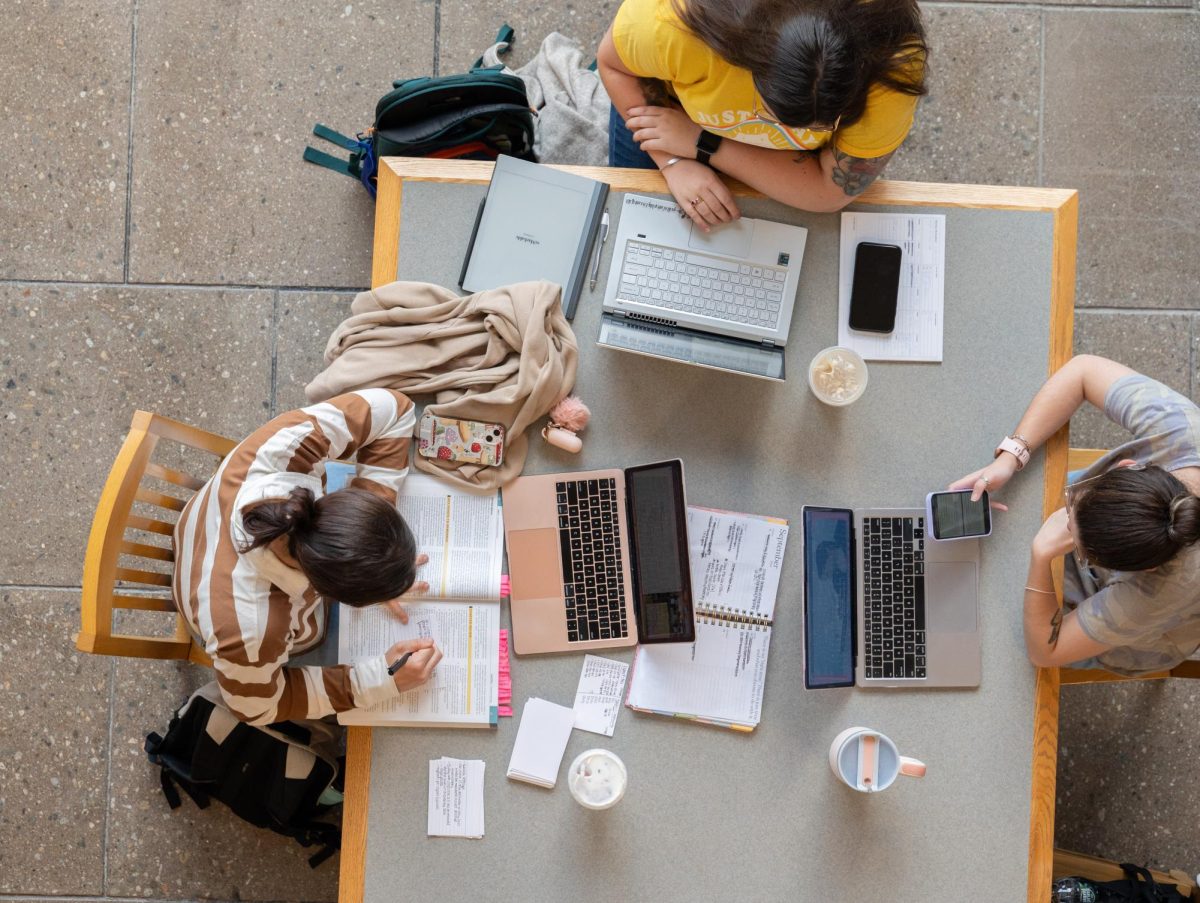Practically since the invention of the iPad, when it was clear that technology was working its way deeper and deeper into our lives, educators have been discussing whether the switch from paper-based to paperless classrooms is worth the hassle. That question was answered for us in 2020, when the COVID-19 pandemic forced classrooms across the globe to switch to fully online modes of learning at the drop of a hat. As society returns to a new “normal,” classrooms of every level are in a state of paper limbo—a completely digital classroom seems great on, well, paper, but everyone who went to school during the pandemic knows the application can be far from ideal.
The most obvious barrier to paperless classrooms is access to technology. Laptops are expensive, and even the most budget-friendly, bare-bones laptop will still come to nearly $500, maybe a little less than $300 used. Add the cost of books, housing, tuition and personal expenses—travel, supplies and, god forbid, recreation—and $500 starts to look a lot steeper. As The New York Times writes, “…most budget laptops that are fast enough for school work tend to be bulky, heavy, and stuck with battery life that won’t last a full day of classes. You have to be extra-vigilant when shopping for a laptop in this price range to avoid slow or old processors, not enough memory, sluggish storage, and terrible, low-resolution displays.” [1]
Any laptop that isn’t deeply unpleasant to use will start to cost more, and laptop prices quickly skyrocket into a range of over $1,000, especially Apple products. And what if that laptop breaks or needs repairs? Or if a class requires more expensive software, like Photoshop? The costs of technology can quickly become prohibitively expensive. Luckily, so long as you don’t need to download applications or access anything offline, the UMass Boston Healey Library loans out a certain number of Chromebooks every semester. According to their website, they also provide Chromebooks on short-term loans, access to on-site computer labs and IT help for personal computers. [2]
Getting a laptop, however, is just the first step. To successfully learn online, the student must have a certain level of digital literacy—a skill that’s not as easy to access as a laptop. While the assumption is that most young adults have a baseline amount of digital literacy, the same cannot be said of middle age students or beyond, whether they’re returning to formal education or just beginning their education later in life. A Pew Research study found that older, lower-income adults without previous formal education were more likely to be unprepared for digital learning, and that 52 percent of total adults are relatively less prepared for an online classroom. [3] That’s not to mention younger students who may never have had access to technology at home, or older members of faculty and staff.
While a hardy laptop could hypothetically out-price the printing costs of an average student, the more common argument is an environmental one. Over the course of their academic career, students will surely waste tens of thousands of pages without a laptop. The environmental impact of lithium-ion batteries, however, isn’t currently any better than just using paper. As Nature correctly points out, “Extracting the raw materials, mainly lithium and cobalt, requires large quantities of energy and water. Moreover, the work takes place in mines where workers—including children as young as seven—often face unsafe conditions.” [4] Some of the poorest workers in the world are exploited for cheap labor to generate billions of dollars worth of batteries, many of which are discarded along with the phone or laptop when they inevitably die.
Recycling paper admittedly isn’t without its flaws, but neither is recycling batteries. The entire recycling industry is in dire need of an overhaul; again, the labor of sorting and recycling American materials is exported to poverty-stricken areas in countries like Indonesia and India, where the toxic waste can filter into their drinking water. According to David Allaway, a senior policy analyst for the Oregon Department of Energy interviewed by Forbes, even if the United State’s recycling industry performed at peak capacity, it would only mitigate climate impacts by about three percent. [6] Buying a new laptop every time it breaks could be just as bad for the environment as wasting tons of paper.
Technology comes with a health risk, too. Doctors have long since proven that the blue light emitted from screens can disrupt your circadian rhythm—your body’s internal clock—and potentially cause other health risks. Poor sleep, according to Harvard Health, has been linked to heart disease, obesity and diabetes, thanks to fluctuations in hormones normally regulated by your sleep schedule. [5] According to Healthline, other studies have pointed to blue light causing more eyestrain than other colors of light—but besides studies, anyone who’s had to use a computer for hours and hours at a time knows that all-too-familiar headache, accompanied by dry eyes and fatigue. [7]
As teachers and professors love to point out, students have been proven to learn better on paper. A study from the University of Maryland found that, when students were presented with the same passage digitally and in print, overall comprehension was better with a physical copy, although students read faster online. [8] The same journal that published that study also pointed out that students tend to process physical notes better than ones taken digitally: “Researchers have found that note-taking associated with keyboarding involves taking notes verbatim in a way that does not involve processing information…By contrast, taking notes by hand involves manipulating and transforming information that leads to deeper understanding.” [9]
While the evidence for a paper-based classroom is extensive, that same University of Maryland study found that some students do generally learn better digitally. A digital classroom gives students who can’t come to campus every day, are sick often or are struggling with outside responsibilities better access to classroom materials so they don’t fall behind on schoolwork. For students who struggle with organization, it can also be much easier to simply click and drag a file into a folder than to manage several physical notebooks and binders. Not every student will find completely paperless or completely paper-based classrooms fully accessible; some students will always need paper-based accommodations and vice versa. Instead of completely embracing a digital classroom or shunning it entirely—or, as it stands right now, languishing in uncertainty about the future of our classrooms—we need to pick a middle ground and commit to it.
SOURCES:
[1] https://www.nytimes.com/wirecutter/reviews/best-laptops/
[2] https://www.umb.edu/it/hardware-labs/labs/chromebooks/
[3] https://www.pewresearch.org/internet/2016/09/20/digital-readiness-gaps/
[4] https://www.nature.com/articles/d41586-021-01735-z
[5] https://www.health.harvard.edu/staying-healthy/blue-light-has-a-dark-side
[7] https://www.healthline.com/health/what-is-blue-light#risks-and-side-effects
[8] https://theconversation.com/the-enduring-power-of-print-for-learning-in-a-digital-world-84352
[9] https://theconversation.com/note-taking-by-hand-a-powerful-tool-to-support-memory-144049



